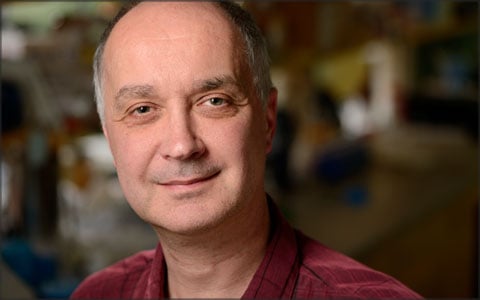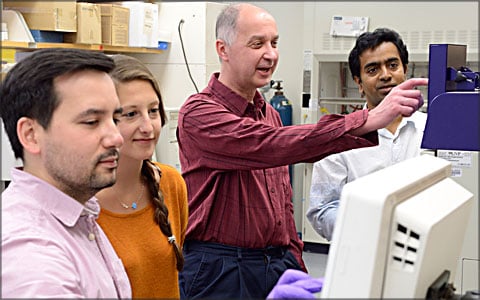For Kevin Yarema, research is sweet.
Yarema, an associate professor in Biomedical Engineering, has focused much of his efforts on metabolic glycoengineering — the ability to manipulate cells’ natural process of ingesting sugars and converting them into complex sugar structures that cover the cell surface.
“Cells can change these sugars depending on what they’re doing,” Yarema says. Similar to how people change clothes for a wedding versus playing rugby, he says, cells constantly change their sugar coatings. Cancer cells, for example, are able to use about 200 times more glucose than normal cells, which often results in different sugars displayed on their surfaces than healthy cells.
Yarema’s lab has taken a metabolic approach to try to alter pancreatic cancer and brain cancer cells, feeding them unique sugar compounds created in the lab to change how they process and display sugars.
“We can go in several different directions,” Yarema says. “One is to try to tweak the types of sugars normally found on a cancer cell, to make it be more like the sugars on a healthy cell … It could be a benign way to treat cancer.” In other work, his lab is adding non-natural chemical groups into sugars that cells ingest with the hope that they would change the cell surface so it would be chemically distinct from a normal cell. “That opens up possibilities that the immune system would attack it, or that we could make a drug or diagnostic agent that would recognize the unique chemistry of a cancer cell to treat it that way.” In a recent paper, treating drug-resistant pancreatic cancer cells with both typical tyrosine kinase inhibitor drugs and a compound developed in his lab resensitized the cancer cells so they once again responded to drug treatment.


